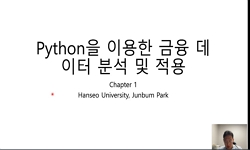This study aims to optimize the thermoforming process of Glass Fiber Reinforced Thermoplastics (GFRTP) by investigating the effects of temperature, pressure, stacking angle, and heating time. Systematic adjustments of these parameters enable a detaile...
http://chineseinput.net/에서 pinyin(병음)방식으로 중국어를 변환할 수 있습니다.
변환된 중국어를 복사하여 사용하시면 됩니다.
- 中文 을 입력하시려면 zhongwen을 입력하시고 space를누르시면됩니다.
- 北京 을 입력하시려면 beijing을 입력하시고 space를 누르시면 됩니다.

Research on GFRTP Thermoforming Process based on Microstructure Analysis = Research on GFRTP Thermoforming Process based on Microstructure Analysis
한글로보기https://www.riss.kr/link?id=A109721889
- 저자
- 발행기관
- 학술지명
- 권호사항
-
발행연도
2025
-
작성언어
-
- 주제어
-
KDC
500
-
등재정보
KCI등재,ESCI
-
자료형태
학술저널
- 발행기관 URL
-
수록면
80-85(6쪽)
- DOI식별코드
- 제공처
-
0
상세조회 -
0
다운로드
부가정보
다국어 초록 (Multilingual Abstract)
This study aims to optimize the thermoforming process of Glass Fiber Reinforced Thermoplastics (GFRTP) by investigating the effects of temperature, pressure, stacking angle, and heating time. Systematic adjustments of these parameters enable a detailed microstructural analysis using optical microscopy. Python-based image analysis is employed to extract key quantitative features, such as void fraction, to support process optimization. Furthermore, an Artificial Neural Network (ANN) model is developed to predict optimal processing conditions. The ANN results identify conditions that minimize void fraction, demonstrating the effectiveness of the proposed optimization approach. This study provides a theoretical foundation for GFRTP manufacturing and introduces an innovative combination of image analysis and ANN modeling to enhance production efficiency and product quality, promoting broader composite applications.
동일학술지(권/호) 다른 논문
-
ZnSe(Te) 양자점 기반 청색 발광 다이오드의 최근 연구 동향
- 한국복합재료학회
- 진우석 ( Wooseok Jin )
- 2025
- KCI등재,ESCI
-
플루티드 코어 기반 주파수 가변 능동형 레이더 흡수 구조 설계 및 성능 분석
- 한국복합재료학회
- 박권우 ( Kwon-woo Park )
- 2025
- KCI등재,ESCI
-
- 한국복합재료학회
- ( Yumin Lee )
- 2025
- KCI등재,ESCI
-
탄소나노튜브 시트를 이용한 알루미늄 복합재의 계면제어 및 열전도도 특성에 관한 연구
- 한국복합재료학회
- 강대영 ( Dae Young Kang )
- 2025
- KCI등재,ESCI




 ScienceON
ScienceON KISS
KISS






